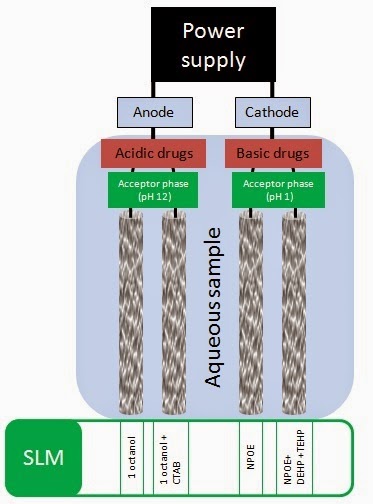Read all posts from October 2014
Thermo-responsive molecularly imprinted monolith in extraction Molecularly imprinted polymers (MIPs) are widely employed sorbents due to their improved selectivity. They are synthesized in the presence of the analyte, which is called template, and therefore the polymeric network is constructed around the target leaving selective chemical cavities when it is washed away. After the bulk synthesis, the polymer is crashed and sieved to obtain a solid with a particle size as homogeneous as possible. In a recent article published in Analytical and Bioanalytical Chemistry, researchers from the Tianjin Medical University at China have proposed a smart MIP monolith for the extraction of ketoprofen from milk samples. Link to the post Simultaneous electromembrane extraction of acidic and basic drugs In most of the cases, microextraction techniques are applied to isolate and preconcentrate a target compound or a narrow group of them. The simultaneous extraction of a given sample into frac
